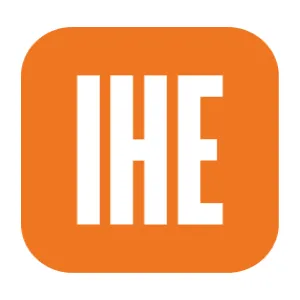For early-career researchers (ECRs), building a digital research space can feel like another burden piled onto an already demanding schedule. The idea of online professional networking often evokes images of overwhelming social media feeds and self-promoting influencers.
Yet ECRs face a significant risk by solely relying on institutional platforms for their digital footprint: information portability. While university websites offer high visibility as trusted sources, most ECRs on short-term contracts lose web and email access as soon as their contracts expire. This often forces a hasty rebuild of their online presence precisely when they need to navigate critical career transitions.
Having worked with doctoral and postdoctoral candidates across Europe, common initial hesitations to establishing a digital research space include: uncertainty about how and where to start, discouragement from senior researchers who dismiss digital networks as not “real” work, fears of appearing boastful and/or the paralyzing grip of impostor syndrome. Understanding these hesitations, I emphasize in my coaching the ways that building a digital research space is a natural extension of ECRs’ professional growth.
Why a Strategic Digital Research Space Matters
A proactive, professional digital strategy offers several key advantages.
- Enhancing visibility and discoverability: A well-curated, current, consistent and coherent digital presence significantly improves discoverability for peers, potential collaborators, future employers, funders, journal editors and the media.
- Networking: Strategically using digital platforms transcends institutional and geographical boundaries, enabling connections with specific individuals, research groups and relevant industry contacts globally.
- Showcasing expertise and impact: Your digital space allows you to present a holistic view of your contributions beyond publications, including skills, ongoing projects, presentations, teaching, outreach and broader impacts.
- Meeting communication expectations: As research advances, particularly with public funding, the demand to communicate findings beyond academic circles increases. Funders, institutions and the public expect researchers to demonstrate broader impact and societal relevance and a strategic digital presence provides effective channels for these crucial communications.
- Controlling your narrative: Actively shape your professional identity and how your expertise is perceived, rather than relying on fragmented institutional profiles or database entries.
- Ensuring information portability and longevity: Platforms like LinkedIn, ORCID, Google Scholar or a personal website ensure your professional identity, network and achievements remain consistent, accessible and under your control throughout your career.
Getting Started: Choosing Your Digital Network Combination
The goal isn’t to be online everywhere, but to be online strategically. Select a platform combination and engagement style aligned with your specific objectives and target audience, considering the time you have available.
Different platforms serve distinct strategic aims and audiences at various research stages. Categorizing digital platforms into three subspaces helps map the landscape and can help you develop a more balanced presence across the research cycle.
First, identify the primary strategic goal(s): public dissemination, professional networking expansion or deeper engagement within your academic niche? Your answer will guide your platform selection, as you aim for eventual presence in each space.

Figure 1: Align your digital platform choices with your strategic goals and target audience.
Next, consider your audience spectrum. Effective research communication depends on understanding your target audience and their needs.
- Scholarly discourse: At the outset of your career, specialized academic platforms like ResearchGate, Academia.edu, institutional repositories and reference managers with social features (e.g., Mendeley) are key for engaging directly with peers. Foundational permanent identifiers like ORCID are crucial for tracking outputs across systems.
- Professional network: As you seek to develop your career, LinkedIn, Google (including Google Scholar) and X (formerly Twitter) are vital hubs across academia, industry and related sectors.
- Share for impact: TikTok, Facebook and Instagram excel for broader dissemination. Do adjust style and tone: While academics can process jargon and complex concepts, a broader audience will engage more in plain English.
A strong, time-efficient and pragmatic starting point is to create a free and unique researcher identifier number like an ORCID, develop a professional LinkedIn profile and engage with a relevant academic platform (this would be in addition to your presence on a university or lab website). Because the ORCID requires no upkeep and a LinkedIn profile can leverage existing institutional and biographical information, with this combination ECRs can quickly establish a solid foundation for gradual digital expansion over the medium term.
Make It Manageable: Time, Engagement and Content
Once the platform combination is in place, effective digital management requires balancing three core elements: time, engagement and content.

Figure 2. Key considerations for a sustainable digital networking strategy: balancing realistic time investment, meaningful engagement and appropriate content types.
Time Investment
Key message: Prioritize consistency over quantity.
- Focused engagement: Allocate short, regular blocks (e.g., 15 to 30 minutes weekly) for specific activities like checking discussions, sharing updates or thoughtful commenting between periods of focused research.
- Platform nuance: Invest strategically, recognizing that platforms have different tempos and life spans (e.g., a LinkedIn post typically has a longer life span than an X post).
- Campaign bursts: Plan ahead to strategically increase activity around key events like publications or conferences, utilizing scheduling tools for automated posting.
- Content cadence: Consistency beats constant noise, so plan a realistic posting schedule such as once a month.
Engagement
Key message: Focus on short but regular efforts.
- Active participation: Move beyond passive consumption by commenting, sharing relevant work and asking insightful questions.
- Build relationships: Genuine interaction fosters trust and meaningful connections.
- Monitor your impact (optional): Use platform analytics to understand what resonates and refine your strategy.
Content Type
Key message: Your hard work should work hard online.
- Written: Summaries, insights, blog posts, threads, articles.
- Visual: Infographics, diagrams, cleared research images, presentation slides.
- Multimedia: Short explanatory videos, audio clips, recorded talks.
- Cross-post: Share content across all relevant platforms (e.g., post your YouTube video on LinkedIn and ResearchGate).
Overcoming Reluctance
If you’re hesitant, consider these starting points:
- Start small, stay focused: Choose one or two platforms aligned with your top priority. Master these before expanding.
- Embrace learning: Your initial digital content may not be perfect, but consistent practice leads to significant improvement. Give yourself permission to progress.
- Integrate, don’t isolate: Weave digital engagement into your research workflow. Share insights from webinars or interesting papers with your network.
- Give and take: Focus on offering value by sharing insights, asking stimulating questions and amplifying others’ work. Reciprocity fuels networking.
- Set boundaries: Protect your deep work time. Schedule dedicated slots for digital engagement during lower-energy periods and manage notifications wisely.
- Be patient: Recognize that building meaningful networks and visibility is a long-term career investment.
Your Digital Research Space: A Career Asset
A strategic digital research space is essential for navigating and succeeding in a modern research career. A thoughtful approach empowers you to control your professional narrative, build lasting networks, meet communication expectations and ensure your valuable contributions are both visible and portable.



